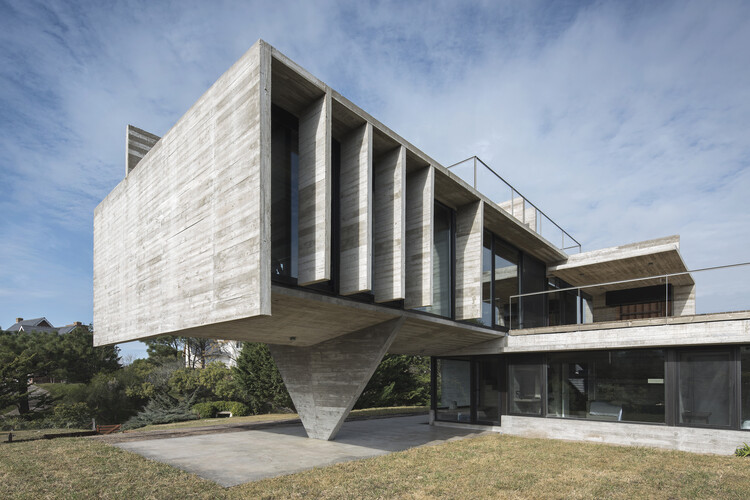
In response to the diverse topographies and natural conditions throughout Argentina, Luciano Kruk’s architectural works harmonize with their environment, landscape, and nature. Whether nestled in a forest, situated on sloping terrain, or positioned on a rural plain, his designs aim to enhance the connection between the interior and exterior, predominantly using concrete as the primary material.
Luciano Kruk, born in Buenos Aires, graduated as an architect from the University of Buenos Aires around 2000. He was a member of BAK arquitectos (Besonías-Almeida-Kruk), earning significant recognition until 2012, when he founded Luciano Kruk Arquitectos. In academia, he served as a project professor at the University of Buenos Aires from 2000 to 2009 and has been invited to lecture and conduct seminars at various universities in Argentina, Brazil, Mexico, Costa Rica, Ecuador, Spain, Italy, and the United States. Notable institutions include the Polytechnic University of Madrid (ETSAM), the University of Venice (IUAV), and the University of Santa Catarina in Brazil (UNIVALI).
Kruk has received numerous awards, such as the SCA-CPAU Prize for the L4 House at the XVI Buenos Aires Architecture Biennial (2016). He has also participated in international events and exhibitions, including ‘Architecture Week Prague 2015’ and the XXI Pan-American Biennial of Architecture of Quito (BAQ 2018).
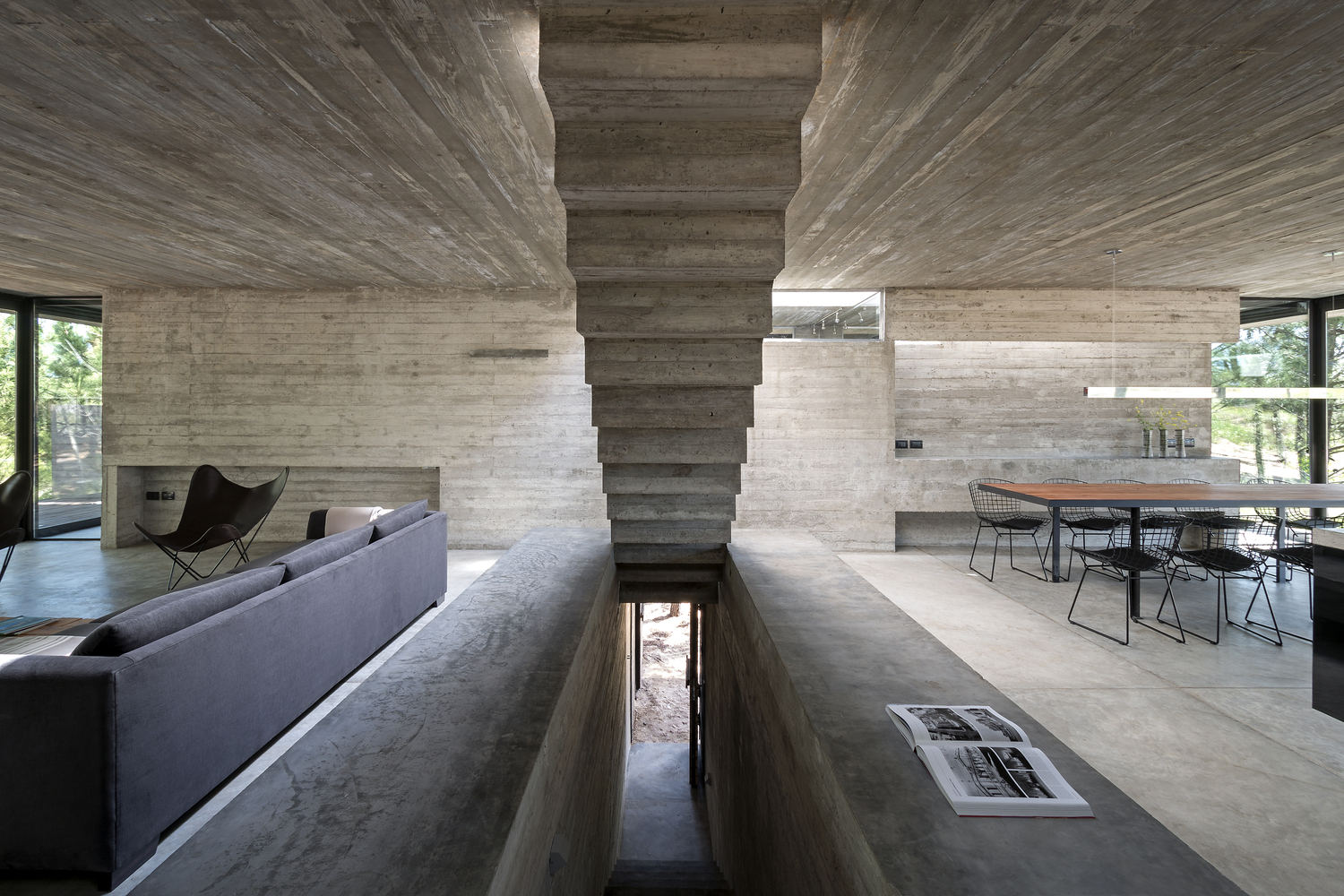
Luciano Kruk has developed numerous individual and collective housing projects in both natural environments and the dense urban setting of Buenos Aires. His approach emphasizes an architecture of coexistence and integration with the surrounding landscape. Much of his work is distinguished by the extensive use of reinforced concrete, which serves not only as the structural framework but also as a key spatial, aesthetic, and constructive element that shapes the entire architecture.
In his designs, the structure, the entry of light, and spatiality are conceived as a cohesive whole. Special emphasis is placed on the living room, dining room, and kitchen, as these are the primary spaces where inhabitants are expected to spend most of their time.
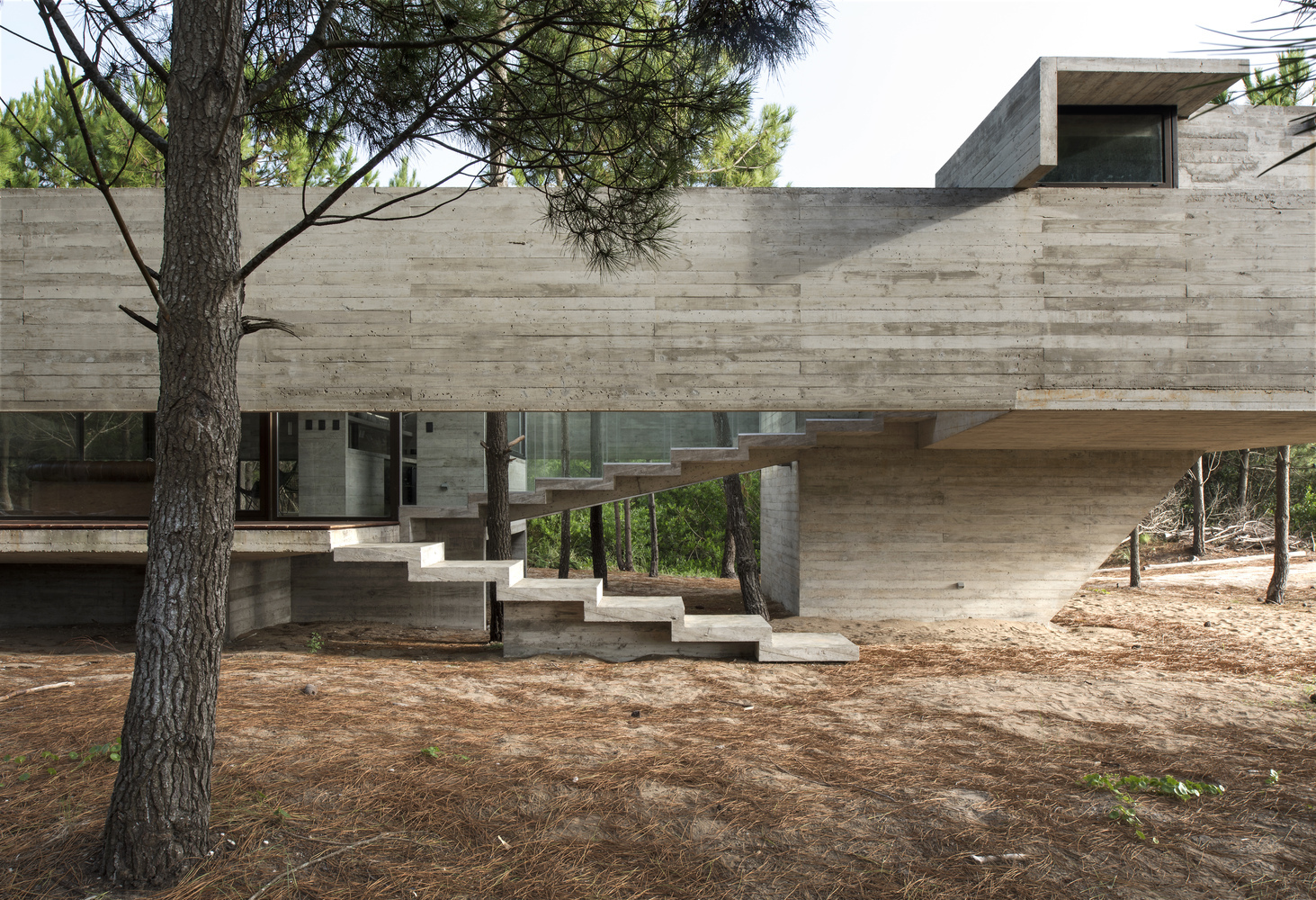
The choice of exposed concrete in Luciano Kruk’s projects stems from a desire for an austere and honest material that requires minimal maintenance over the house’s lifespan, making it economical and ensuring long-term durability. Visually and aesthetically, the color and texture of concrete blend seamlessly with the surroundings, promoting a harmonious coexistence and dialogue with the landscape.
Using a single material for the entire construction streamlines the building process by eliminating certain finishing details, thus simplifying construction and coordination with fewer intervening actors. Once the concrete work is completed, the installation of carpentry finishes the house, making it practically move-in ready.
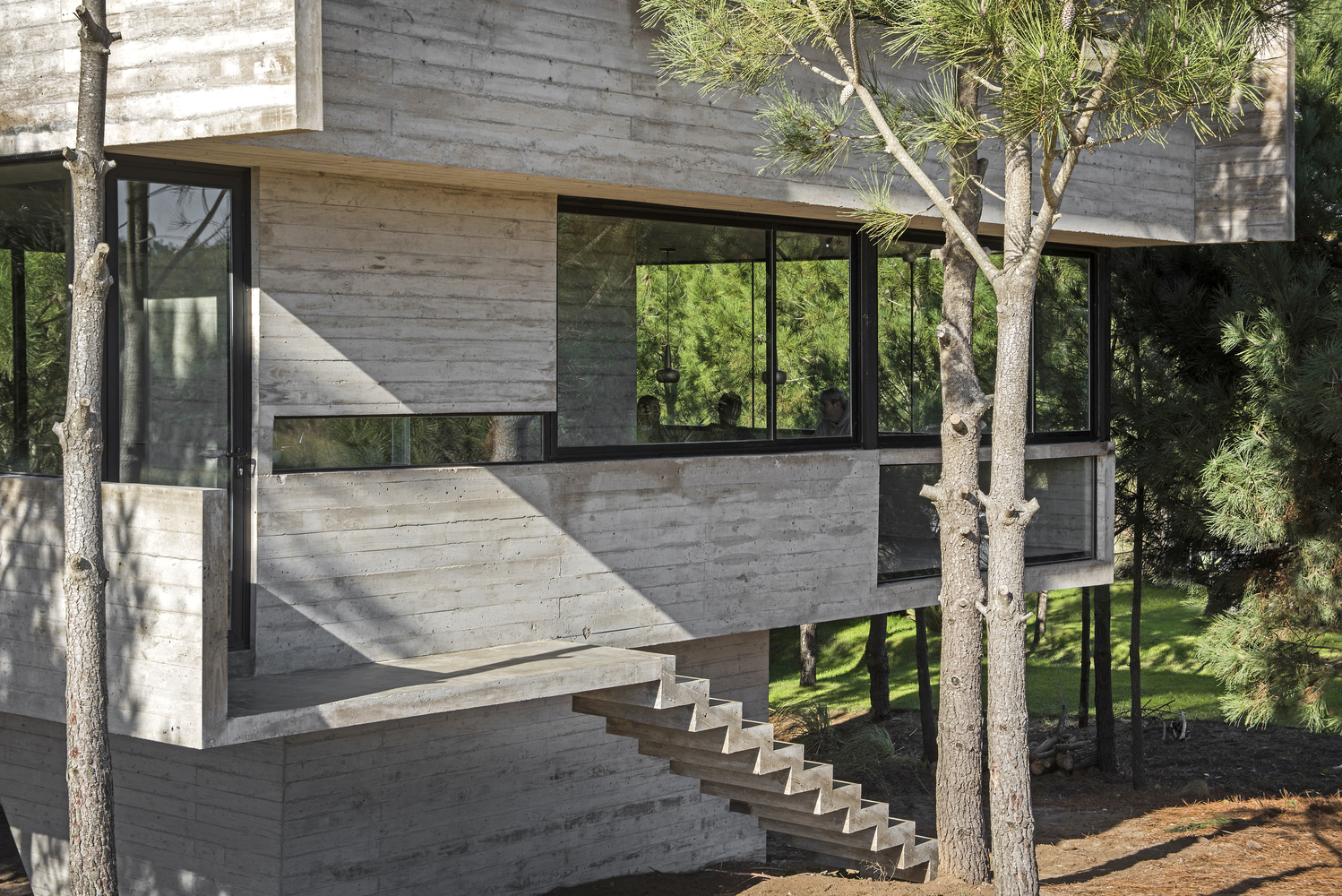
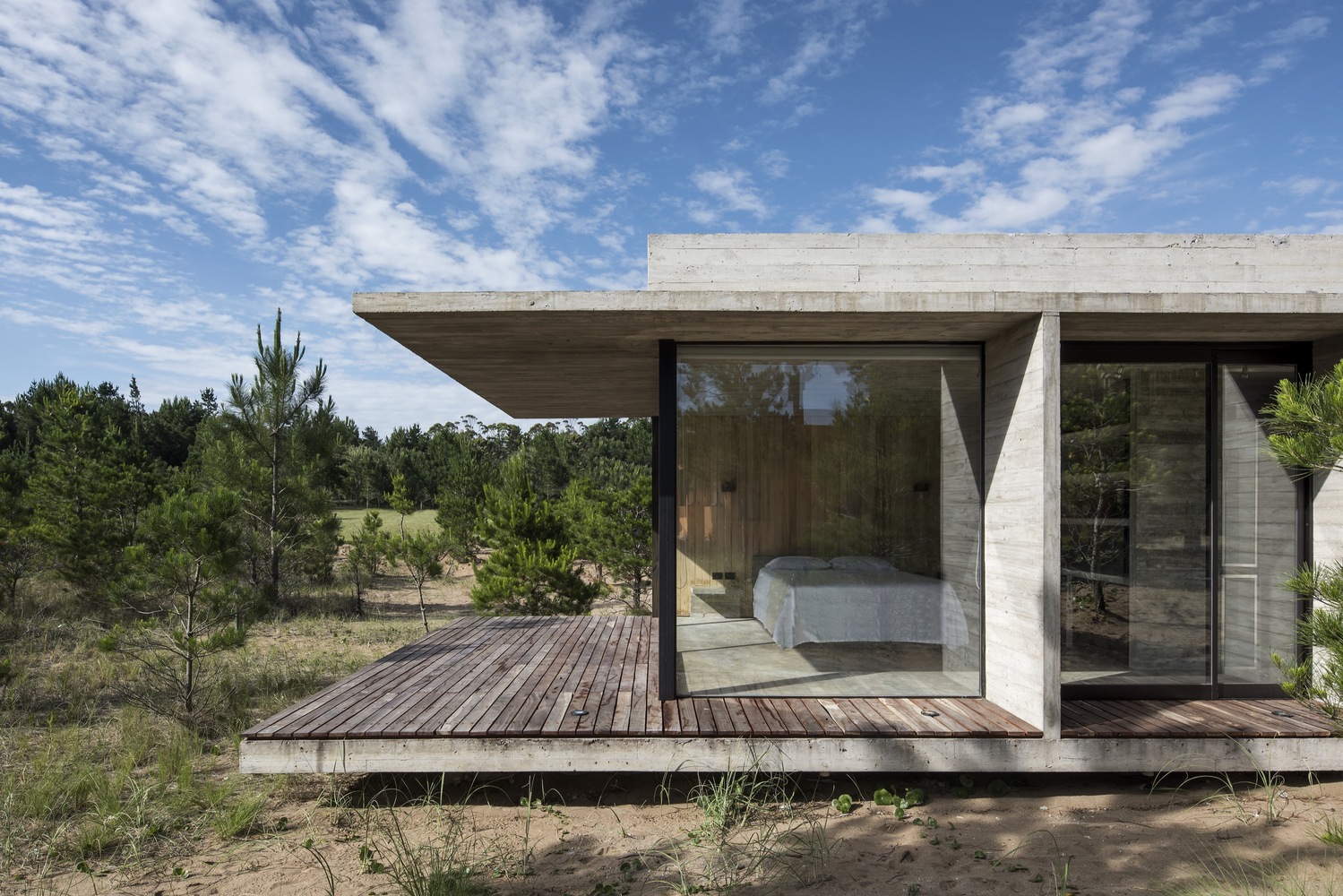
Furthermore, the noble qualities of exposed concrete are utilized to integrate support elements directly into the walls. The concrete surfaces, displaying their artisanal formwork, add a unique aesthetic. For instance, horizontal pine boards might be used for partitions, while the joints from phenolic plates are visible in the ceilings. In most of their projects, concrete forms a shell that is enclosed with glass around its perimeter. The reflections from the glass contribute to a respectful integration with both the natural and built environments, enhancing the overall harmony of the design.

